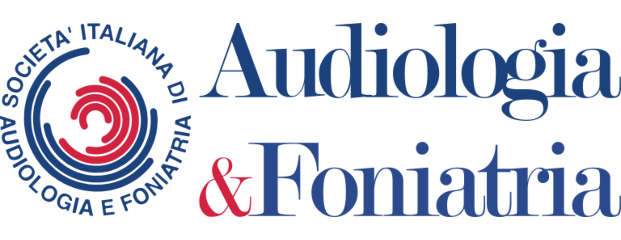Abstract
Objective: Hearing loss in Down syndrome (DS) is well-documented in literature but there is no agreement on the true incidence, ranging from 38 to 78%. The main purpose of this study was to collect into a database the otological disorders and to perform an audiological assessment in a group of DS patients of different age, in order to appreciate their actual incidence. Study design: otological and audiological data from 143 DS patients (age range 1-59 year) were prospectively collected. Setting: The sample was divided into 8 age-groups. The general and specific anamnesis of all 143 subjects was taken; all underwent otological examination, measurement of the caliber of the EAC, tympanometry and pure tone air and bone conduction threshold assessment or infantile audiometry. Results: 44% of subjects complained audiologic pathologies, which occurred in pre-school age in 87.7% of the cases, and in 56.4% within the first year; most patients presented normal hearing or mild hearing loss: only group 1 (from 6 to 35 months) and 8 (over 55) suffered from moderate hearing loss. Children up to 5 years old presented a high incidence of otitis media with effusion (OME) (more than 85% in the age group between 6 and 35 months old) and associated conductive hearing loss. OME after the age of 6 was infrequent. Conclusion: Hearing problems in pediatric DS subjects are extremely frequent and affect negatively learning and language development; for this reason, periodic audiological evaluation is crucial in order to act promptly. On the other side, almost all adults do not present hearing impairments such as to affect communication, even though an early presbyacusis is quite frequent.
Keywords
Download
Iacona E., Piatti G., Aldè M., Ambrosetti U. (2020) "Audiological evaluation in a heterogeneous sample of subjects with Down syndrome
" Audiologia e Foniatria, 5(1), 15-26. DOI: 10.14658/pupj-IJAP-2020-1-5
Year of Publication
2020
Journal
Audiologia e Foniatria
Volume
5
Issue Number
1
Start Page
15
Last Page
26
Date Published
12/2020
ISSN Number
2431-7008
Serial Article Number
5
DOI
10.14658/pupj-IJAP-2020-1-5
Section
Articles

 © 2025 Padova University Press - Università degli Studi di Padova
© 2025 Padova University Press - Università degli Studi di Padova